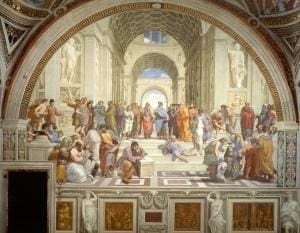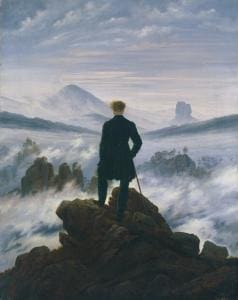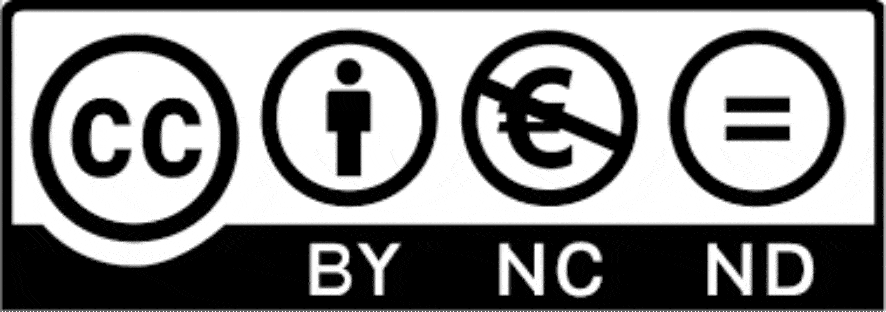Printable PDF version in Italian

Noting that expressing oneself privatively in the first instance is more helpful than ever in delimiting the scope of the discussion and preventing readers less inclined to engage with ideas other than their own from succumbing to an anarchic reverie before reading the entire paper, I will begin by discussing what is not and should not be meant by the word “neo-humanism.”
Man, in his long historical and biographical journey, has passed through the most disparate psychological and existential places in a mad search for a Holy Grail, a philosopher’s stone, a light from the high and wild peaks of the ‘Himalayas that is, to avoid an unnecessary string of possible declinations of the same purpose, of the one extraordinary asset that can never be lost or acquired: itself. A complete “self,” in which each part is integrated and appropriately situated, and the whole has thus become organically capable of self-defining itself as a true microcosm.
All the attempts, approaches, and ideological choices (when not purely destructive) have served to make man aware of a condition that eschews the conqueror-conquered relationship since it coincides with both the one and the other and, more importantly, coincides with both in the very act in which the former enters into relationship with the latter, thus creating a unity where desire and the will to discover are united with the object sought inalienably.
Even so, in doing so, achieving successes or clashing with the rocks of failure, man has affirmed and vivified more and more the idea that no importance can justify the hypothesis of a reduction of reality: it is immersed in the world, constitutes a functionally essential part of it, and makes the latter inextricably linked to the human being living within it. Man’s singularity, therefore, becomes a non-exclusive part of the plurality inherent in the world-nature and, therefore, is mirrored in the human mind and determines, in a “naturally” consequential way, the immense pantheon of images that lives dynamically within it.

Thus, before any other consideration, neo-humanism is not a form of “monotheism” and stands, indeed, precisely concerning opposition to any form of unification of signifiers (definable by the often abused term “gods“) in the name of a particular aspect of its psychology. The centrality of man means awareness of the manifold that colors his inner workings and, above all, awareness that the integrative unification that “complete” man succeeds in accomplishing occurs only because at the basis of it is placed the recognition of an ineradicable diversity without the risk of total existential flattening.
Likewise, the term “neo-humanism” is by no means synonymous with “tolerance.” The man was not born to “tolerate,” a condition that ipso facto places him at a level of feigned and fallacious superiority toward that which is precisely “tolerated,” but rather to freely accept to integrate the ideas that other men externalize into his interpretive context. A freedom that is more than a possibility since it is renegade only in its appearance but whose substantiality is revealed in the existential condition of man as a being ontologically deprived of the faculty of not being free.
It is precisely this condition of (non-)freedom that determines the need for a plurality of inner manifestations and images (for this, we gladly pay a huge intellectual debt to the insights of C. G. Jung), without which man is caught up in the obsession of an exhausting search within a perimeter too narrow to guarantee the natural spatiality that never can and should be denied to any human being.
Thus, what can indeed be said in negative form about neo-humanism is that it is not inherently subservient to any exclusive ideology, being itself an “ever-glowing magma” that sees in its petrifying the death of all potentiality. In this descent from the lofty peaks of a volcano to the depths of the valleys, neo-humanism is colored by every nuance it encounters and, in this never-superficial embrace, it offers mankind the most extraordinary of centralities: the knowledge that it is based on an in-dividualitas, where no artificial division can ever exclude the power of the manifold brought together by a single being.
For these reasons, the use of any form of “monotheism,” both in the narrow and broad sense, is the fruit of a conceptual effort destined from the beginning to its natural failure: no monotheism is capable of assuming a “whole” that does not take into account, albeit putting its head underground, an implicit duality. Negation and complement are the aftermaths of an essence that, forced into unnaturalness, degenerates into pure associative madness.
Under the pretense of defining a single super-partes signifier, man has become a housewife ruled by an obsession to separate each grain of wheat based on invisible external factors. Suppose it does not exhibit a distinctly suitable character to make it a member of either set. In that case, the housewife will rack her brains by resorting to the most convoluted reasoning lest she fall prey to doubt. Good and evil are the names given to these sets, which represent the legacy of a man who, out of sheer intellectual and psychological pusillanimity, subordinated himself to himself, relegating to a vanishing point dispersed in the fog, the task of giving perspective depth to his mental illness.
Consequently, and to avoid this, neo-humanism stands in that which transcends nothing but what is already in man’s hands and restores to it that dignity that has been trampled upon through a work of rediscovering the plurality characteristic of the essence that makes life worth living to the fullest.
Thus, neo-humanism is not a form of religion, nor can it be equated with a scaly pseudo-ideological creed that prefers to deny diversity rather than integrate it; it has no standard-bearer, no idol, no symbol of good or evil. In its deepest conformation, neo-humanism is the recovery of the “spiritual” power of man living within a reality where science and technology shape, beyond all judgment, every aspect of daily life.
It (neo-humanism) is not to be understood as a return to the pastoral vocation of man (a choice that is left to the individual), nor an awe of nature as a form of ecological extreme; neo-humanism is the awareness of human life and its peculiar tendency for creative interaction with the world (both strictly natural and artificially shaped).
This cultural movement, to speak finally in favorable terms, is a street where grass grows freely, where flowers have their colors, where nettle clings around the bare feet of travelers, where statues elicit images beyond all captioning, where man need not ask permission to embrace the intensity of every inner perception, where morality gives way to naturalness, and where no universal signifier will ever have the power to take the place of the manifold, because the beautiful pictures painted by neo-humanism always contain every nuance of color and, by reflection, such shades always find their proper place giving the resulting ensemble an irreplaceable sense of beauty.
Thus, neo-humanism could be considered an “internalized neo-paganism” without exceeding the claim of plagiarizing the current culture with forms that no longer find an outward place in human life. Starting, in fact, from the assumption that today’s reality is limited and sometimes suffocated by the idea of a signifying singularity (primarily through “monotheism“) does not imply that this is not an essential constituent of that today during which our consciousness-raising takes place. Recognizing what is current is the first step in laying a solid foundation where a building, even a small one devoid of spires, can find the support it needs to stand and remain upright under the elements.

“Integrate” will never mean destroy, just as “consider” will never sink into the nefarious vortex of tolerance. It is an embrace that symbolizes neo-humanism: an embrace that may remain empty but will never close without allowing those who desire it to be understood.
In the same way, those who remain excluded from it (by accessible will criticism) will never be transshipped into the mephitic cauldron of evil, different or useless, because even the ideas of detractors always have their place, and a genuine and profound neo-humanism can only constantly give them light and value.
Perhaps some might accuse neo-humanism of extreme relativism. Still, suppose the proposed alternative is obscurantism masquerading as absolutism. In that case, the hypothesis of a diversity of views is more palpable than the suffocating silence of a museum where all the rooms are closed so that visitors contemplate only a specific work. On the contrary, in the “museum” in neo-humanism, each work has equal dignity insofar as it, placed in an integrated context, enriches its form and substance. No Mona Lisa will ever be exhibited except next to and with the same regard intended for every other painting so that it is always and only the visitors, with their intelligence and sensitivity, who will dwell most in front of the masterpieces that most peremptorily elicit their reactions.
The assumption of aprioristically defining what is to shape each individual’s critical sense is an “evil” idea that, going back to the Greek etymology of the term dia-bàllein, separates instead of unites, sets one against the other: the former worthy of praise as “followers” and the remainder to be deprecated for their shamelessness.
No fear of knowledge, instilled with the skill of psychological plagiarism, should ever cross the threshold of neo-humanism, just as no fear drove Odysseus to cross that boundary sealed by the triumph of irrationality. The choice is and must always remain in the hands of man, who, already burdened by the precious but heavy burden of freedom, has primarily the duty never to forget the exercise of his own will, even though this may sometimes have illusory appearances.
Neo-humanism does not look at free will, in fact, as the “humanized” degeneration of morality, which seeks to behave as a watershed set by a supreme being between good and evil (trying to make people believe that even in the ocean, the two streams will remain unnaturally separate), but rather as the essential need that being can seek to satisfy (with the humility of one who has eyes but not yet all the landscapes where they can look) or disavow as “simple” folly. It is useless to anyone to judge those who choose the second path. Still, neo-humanism can only continue its imperishable invitation to take the first path, taking all the risks involved and never clinging to any certainty outside the self. A self that could even deceive through its images but always keeps alive (unless sinking into the most profound psychopathological distress) that unity that is not born to separate but rather to be the primal emblem of generative integration.
Let a man become the sole helmsman of the ship of existence and let all his ideas, images, thoughts, reflections, and creations always be accepted as “works” to be critically analyzed without censorship operating before free choice. I conclude, therefore, by wishing that the words Ulysses uttered through Dante‘s pen will always be the most extraordinary prayer to be raised unceasingly to one’s individuality:
“…Consider your seed.
Ye were not made to live as brutes,
But to follow virtue and knowledge.”
This work is licensed under Creative Commons BY-NC-ND 4.0
It is also available in Italian on SlideShare
If you like this essay, you can always donate to support my activity! One coffee is enough!


